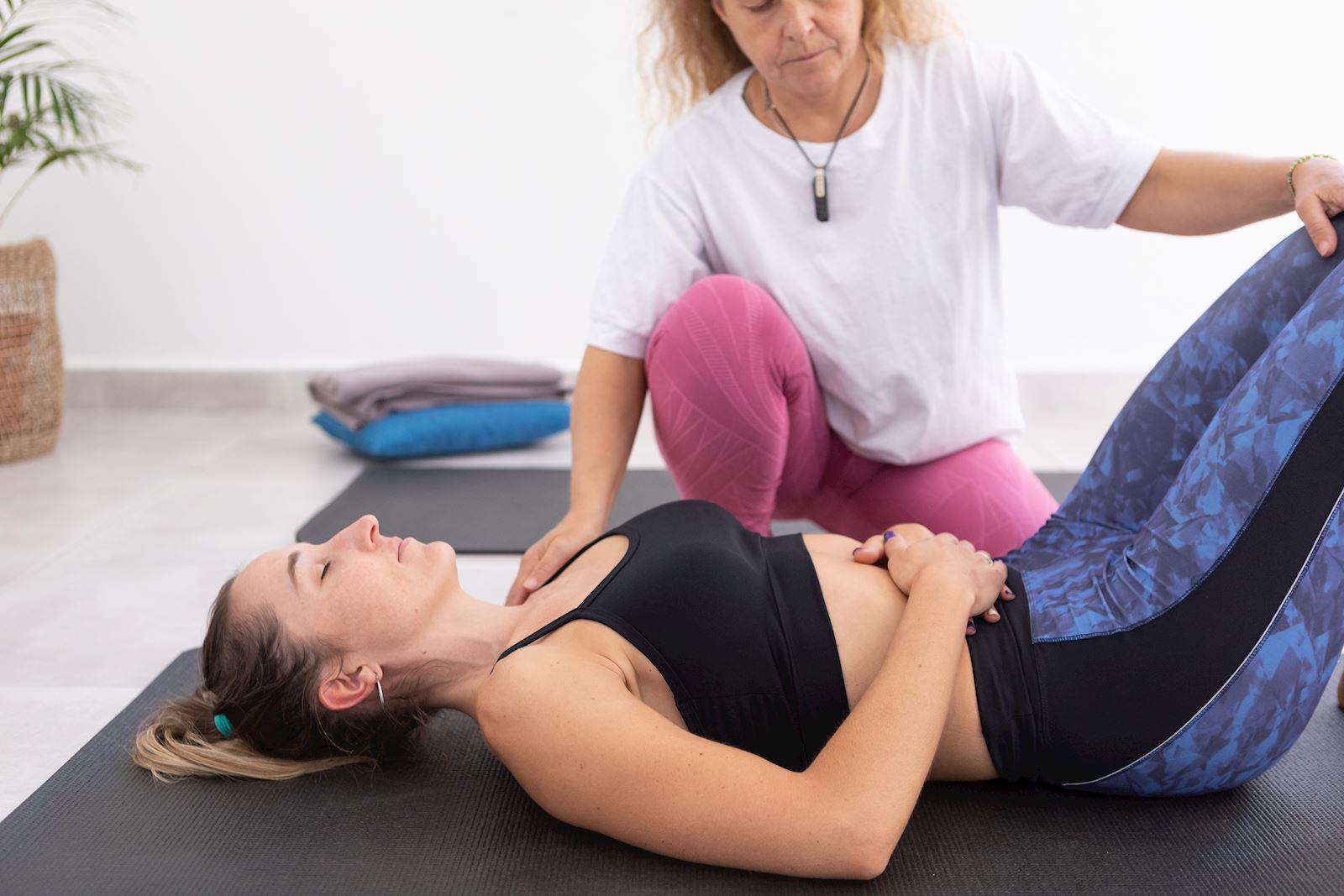"Take a deep breath."
How many times have you heard that phrase? Especially in stressful situations or when there is pain, fear or anxiety.
The reason people say it is because it works! When you take a deep breath, more specifically, breathe with your diaphragm, it sets off a ton of useful things in your body and brain.
Deep breathing helps you deal with modern-day stress.
The diaphragm is linked to your autonomic nervous system (ANS). Your ANS is composed of two different parts: the sympathetic nervous system and the parasympathetic nervous system. The sympathetic system is the driver of the "fight or flight" system, which is your primal response to stress. The parasympathetic system is more of a calming system — where you should be most of the time.
Now, centuries ago, stress was a little different. It was life or death, like coming across a bear in the woods when you were out hunting. These days, you might still come across a bear in the woods if you are out hiking. But more commonly, your stressors come from deadlines, running late for a meeting, traffic and financial, health or relationship issues.
“Your body's response is about the same,” says pelvic floor physical therapist Katie Graham, PT. “In response to stress, your body produces adrenaline, your heart rate and respiratory rate increase, and blood flow is diverted from your gut to your muscles. In the case of that bear, you are prepared to fight it or run away.”
Other stressors can be more persistent and chronic, and this is where your body can have some difficulty. When you're constantly in a state of "fight or flight," your body and brain are on high alert and not in a good place. When you take a deep breath and breathe with your diaphragm, you can calm down that "fight or flight" system and bring balance and calm back to your body and brain.
Diaphragmatic breathing is good for your core muscles.
Not only does diaphragmatic breathing help calm your body and help you deal with stress better, but it also helps strengthen a muscle essential to inner core function, stability and pressure management. The diaphragm is a dome-shaped muscle that sits inside your lower ribcage. Together with the deep abdominal muscle and the pelvic floor muscles, it works to add stability and support to your spine, abdomen and pelvis. For people who experience low back pain, research has shown that the diaphragm doesn't move as much and is in an elevated position compared to people without back pain.
The coordination of the inner core, including the diaphragm, abdominal muscle, and pelvic floor muscles, is also essential for bowel and bladder control and pressure management. Many people who experience urinary incontinence or pelvic organ prolapse could benefit from training their diaphragm and inner core muscles to work more efficiently and effectively.
Practice this diaphragmatic breathing exercise to heal your body and brain.
So how do you breathe with your diaphragm? It's pretty easy, actually. After all, it's breathing! All it takes is a little time and focus. Find a place where you can focus and follow these steps to exercise your diaphragm and reduce your stress.
- Start by either sitting quietly, laying down on your back or on your side. Make sure you are in a comfortable position that supports your body so that you can take full advantage of the relaxing benefits of your breathing practice.
- Begin by taking a breath in. Focus on your lower ribcage expanding — picture an umbrella opening inside your ribcage. This should gently expand your lower ribcage and belly. You should feel a little deeper breath than normal. You should also notice that your belly is moving out more than your collar bones are.
- As you blow air out, the opposite should happen, your abdomen and ribcage should gently draw in.
- If you want to take it a step further you can include your pelvic floor muscles (think Kegels or the muscles you would use to stop your urine stream, gas or a bowel movement). As you inhale, let go of those muscles and let them gently lengthen. As you blow the air out, gently draw your pelvic floor muscles up and in, aka a Kegel.
This is diaphragmatic breathing and the coordination of the inner core. Practice this technique for a couple of minutes, multiple times a day to calm your nervous systems to help manage your daily stress and improve your inner core for strength and stability. Specifically, slowing down your breathing to six to 10 breaths per minute has been shown to improve your ability to manage physical and mental stress and balance your ANS.
“Diaphragmatic breathing can also come in handy when you exercise or have to lift something heavy,” says Katie. “When you are doing something strenuous make sure to exhale through the exertion to activate your deep inner core muscles. This will help you to activate your inner core muscles to support your lower back, and your pelvic floor.”
If you struggle with issues related to bowel or bladder control, coordinating all those muscles may be a little more difficult. A pelvic floor physical therapist can do an evaluation to make sure you are activating the correct muscles and achieving the desired coordination. When you can coordinate your inner core, you will be able to decrease the intra-abdominal pressure and activate your muscles from the bottom up to stop leaks before they start.
So, take a deep breath and good things will happen!


